Three simple steps to help marketers get the biggest bang for their social media buck.
When it comes to marketing budgets, big isn’t always better in social media. In fact, smaller budgets sometimes net the best results.
In our industry, most automotive marketing budgets are sizeable. But like other businesses, share of budget dedicated to social media varies by automotive brand.
The fact is social media levels the playing field between the haves and the have-nots. With a little bit of ingenuity and knowledge, and by following these three simple steps, it’s possible for small budgets to compete head-to-head with deep pockets to achieve maximum success.
Step #1: Develop ideas with endemic potential.
Marketers who view social media as efficient channels through which they steadily self-promote, where they do more talking than listening, or where they attempt to impose brand messaging and force brand loyalty instead of encouraging it are looking at it all wrong.
Social media is efficient because it’s viral. It isn’t designed for bragging about how great your business is. It’s about enticing people to brag about your business for you. Essentially, social media offers smart marketers the opportunity to turn a handful of people into an enormous labyrinth of loyal brand ambassadors.
In order to do this, marketers should focus on ideas that have endemic potential, or the best chance of engaging people to converse, comment, share, like or follow on a mass scale by entertaining them, enlightening them, or by making their lives easier in some way, and by giving them a public forum to voice their opinions.
Probably my favorite endemic social media campaign on a small budget is Ford’s Fiesta Movement.
The concept is simple enough. Give 100 consumers deemed “agents” a Ford Fiesta for six months, ask them to complete a series of missions and document their experiences — through their own eyes and ears and in their own words – on Facebook, Twitter, Flickr and YouTube.
The results at the end of the first chapter in 2009 were extraordinary. The campaign garnered 6.5 million YouTube views, 50,000 requests for information about the Fiesta (the majority from new customers) and sales of 10,000 units in the first week of the campaign. The best part? Ford’s initial Fiesta Movement was reported to have cost a tiny fraction of the expense of a typical national television campaign.
The launch of BMW’s ActiveE electric car is another great example of social media success on a small budget.
In 2010, the automaker created a mini four-film documentary series featuring thought leaders such as Apollo 11 astronaut Buzz Aldrin and Wired editor-in-chief Chris Anderson to discuss their views about mobility and the future of cities. BMW showcased the video series “Wherever You Want to Go” online, opting out of traditional TV advertising common for a new model launch, instead soliciting engagement exclusively from social media users.
Then, BMW created an app designed to simulate and track users’ daily driving experiences and their impact on emissions, to determine if an electric car was right for them.
Virtually zero media dollars were spent, yet the campaign netted a staggering 450 million media impressions. Beyond the marketing impact, the automaker says the wealth of data gleaned from the campaign will be used in the design and engineering of future BMW vehicles.
What the Ford and BMW campaigns demonstrate is how an idea with endemic potential is worth its weight in gold – in this case, how a great idea proved more effective than the budget (or lack thereof) behind it.
Step #2): Be ‘resource wise.’
Probably one of the biggest myths about marketing on the social web is that it’s free. It isn’t and it never was.
Marketers familiar with social media understand it takes a great deal of resources to be successful, including time spent strategizing, developing and implementing campaigns, and consistent man hours dedicated to routinely engaging with audiences. Costs for design and production, analytics, content creation and research can all put a significant dent in budgets too.
Following are a few suggestions to help marketers cut costs and improve ROI.
- Focus on identifying trends surrounding posts and tweets that net the biggest reactions and interactions. Replicate those strategies.
- Like the Ford Fiesta campaign, leverage User Generated Content (UGC) to reduce development and production expenses whenever possible.
- Rely on turnkey social media management apps to automate posts and updates, gather data or monitor conversations to alleviate the burden of time consuming tasks.
- Take a page out of Marketing 101 by integrating your efforts. Messaging of traditional campaigns should align with social media messaging. Post broadcast ads to your company’s branded social sites.
- Enable your social media audience to share special offers or discounts with their friends.
- Make your customers the star of your social media campaign. Post photos of contest winners or reward your most influential followers with exclusive sneak peeks or special discounts. Fan inclusion is a simple and cost-effective way to build brand awareness.
Step #3): Simplify the sales path.
In Michael Stelzner’s 2012 Social Media Marketing Industry Report, it revealed that by spending as little as six hours per week in social media marketing, 61 percent of marketers surveyed saw lead generation benefits.
Social media isn’t all fun and games. As marketers, our bottom line goal is to positively impact the bottom line of our business. What this means is that any social media marketing campaign – any good marketing campaign for that matter – should include 1) clearly defined goals 2) performance analytics and 3) calls-to-action.
Unlike traditional media where making an immediate purchase after seeing a magazine or billboard ad requires more effort than most new media consumers are willing to expend, social media audiences should never be more than one click away from a call-to-action to learn more about a product or service, or from submitting a request to purchase that product or service.
Bear in mind I’m not suggesting in-your-face, hardcore sales tactics – I’m talking about the ability for users, in one easy step, to request product information or ‘buy now’ if they want.
If you need more inspiration about endemic campaigns on shoestring budgets, check out highlights from one of my favorite non-automotive campaigns – Tourism Queensland’s groundbreaking “The Best Job in the World.”
Nick Matarazzo is CEO of Jumpstart Automotive Group.



